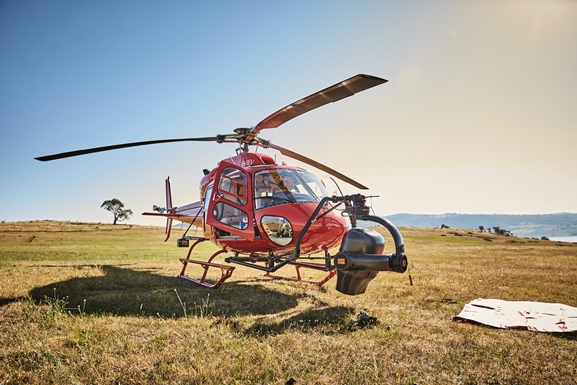Shooting a spot for director Brett Danton, DP Ashleigh Carter had a chance to test out Canon’s brand-spanking-new EOS C700.Â
The spot, made to introduce Land Rover as the new sponsor of the Brumbies, features two cars racing up the side of a mountain.
“They arrive at the top, the Brumbies jump out, and there’s a little scene at the top of the mountain with a little CGI in it,†Danton told IF at a screening of the spot on Tuesday night. “It was actually a really nice little brief. It was the perfect thing to test out this equipment on.â€
Arriving in Oz in late December and taken on location immediately without time for testing, the camera was rigged to a Shotover mount and then attached to a chopper.Â
In order to test the camera’s capability, Carter decided to shoot on “stock standard Canon settings. There were no LUTs applied, there was no extra customization. It was just Canon settings: 800 ISO, C-Log 3, XAVC recording, 25 frames and off we went.â€
Danton describes directing from the inside of a speeding chopper – swooping over the water at 240km/h – as “the biggest pressure directing I’ve ever done, because you know how quickly that bills going up (laughs).â€Â
“And you’re trying to look at the monitor and you’ve got a whole lot of stuff on the ground to coordinate, as well as people in the air to coordinate. And the sun’s moving.â€
The decision to use a helicopter instead of a drone was a matter of speed. “To do the shot that we wanted, we needed this camera to deliver the results,†said Carter. “A drone won’t do the speed.â€
“And even if the drone had a mini on-board, it doesn’t do 4K, for a start. It certainly doesn’t do it with the latitude of the 700. So all those ingredients could only happen with this camera and a 300mm lens.â€
“We had a 30-300, which weighs more than the drone effectively, on the end of this chopper, on this camera, shooting cars screaming up the hill.â€
As well as rigging it, the team used the camera on the ground – on the shoulder and on sticks.Â
“We had to take it out of the Shotover mount to then reconfigure it to go on-to-the-shoulder, which is quite a big effort,†said Danton. “You’ve got a 150 kilo nosemount on the helicopter. You have to remove the whole thing. And we had it out and up and running in about forty minutes or so.â€Â
A long-time user of Canon’s C500, Carter describes the new C700 as “more like a production camera.â€
“The viewfinder, clearly, is a standout. Some Canon cameras haven’t had an eyepiece in the past, so that’s a major improvement in terms of being able to use it across all shooting objectives. It’s very modular. It has the hand grip you’d assume it would have.â€
“The way the camera sees in the shadows is remarkable. Its range [15 stops] held. It never clipped the whites, it never fell into the blacks, and we shot from 6am until the middle of the day.â€
Danton recalls “looking at the WAVeform in the grade just on playback, and it didn’t drop below black and it didn’t peak up. It was crazy. I actually wanted to video it. I’ve never seen a WAVeform sitting there like that.â€
The director completed post in London’s Soho, and was relieved to find the process frictionless.
“Sometimes we’ve had nightmares with post paths,†he said. “When the [C]500 came out the post paths were a nightmare. This just went straight in. We didn’t even have to think about it.â€
Asked where he’d like to see the camera improve, the director suggested “a couple of menu tweaks. We suggested a quick cheat sheet and a couple of other bits and pieces for fast set-ups.â€Â
Canon’s Paul Stewart told IF he’s still waiting for an update to the Codex, the external third-party recorder.Â
“There’s a little upgrade coming for that in the next couple of months which will give you more accessibility to that quality that the RAW file will give you. But other than that the guys were happy. I didn’t get the phone call on the side of the road. It’s not a cheap camera, so you want it to be right.â€


